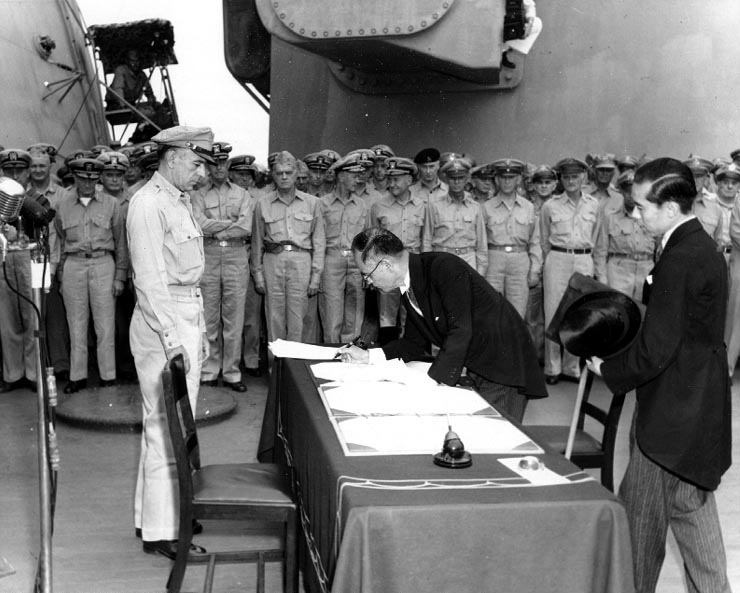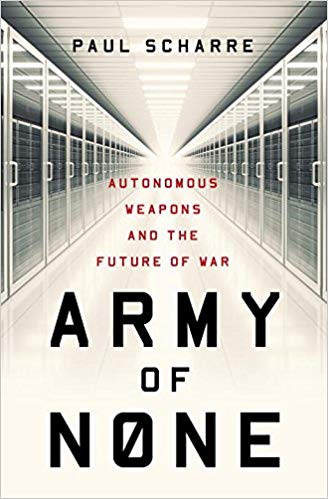STEM EDUCATION 3. Killing People and Breaking Things
Modern history suggests that military superiority driven by technology can be a key factor in deterring aggression and preventing mass fatalitiesApplied STEM nerds are the fuel in the engines of private business, from Apple to Xerox but the need for STEM nerds in the military is less appreciated. Patriotic STEM nerds keep the United States ahead in military technology. The arms race during the Cold War between the Soviet Union and the United States (1947–1991) was a battle among STEM nerds. The United States is still engaged in a warfare technology race against potential enemies.
Today, better AI is the goal of the arms race. Russian President Vladimir Putin has prophesied: “Whoever becomes the leader in this sphere [AI] will become the ruler of the world.”1 Putin’s remarks apply to both economic and military dominance.
It’s uncomfortable to say so, but the primary purpose of the military is to kill people and break things. And the fear that a powerful military will squash the bad guys can keep the peace. Genesis 34 talks about the rape of Jacob’s daughter Dinah by one of the sons of Hamor the Hivite. Hamor’s son said afterward that he loved Dinah so Hamor asked Jacob to give Dinah to his son in marriage. Jacob’s sons responded to Hamor in private and agreed provided that Hamor’s men were circumcised. Hamor agreed, but three days after the circumcision when the freshly cut men were in a lot of pain, Jacob’s sons attacked and killed everyone including Hamor. Thus they avenged the rape of their sister.
When Jacob found out, he scolded his sons. He did not condemn his sons’ actions as wrong. We aren’t told, but he may have been glad that his sons had avenged their sister. However, he was afraid that the other tribes living in the land would feel threatened by the ferocity and obliterate his tribe. Jacob worried. “We are few in number and if they join forces against me and attack me, I and my household will be destroyed.” So Jacob packed his bags and moved his clan to Bethel. This ancient story illustrates that fear of the power of the enemy sculpts behavior. Big, aggressive, barking dogs keep burglars away.
The importance of STEM talent in the military yesterday and today cannot be overstated. World War I was won in part because mechanical engineering STEM nerds invented the tank. Airplanes likewise changed wartime tactics. Air reconnaissance in WWI meant that troops could no longer gather in hiding for surprise attacks. The first airplanes were able to assess troop locations in a simple flyover.
Soldiers make victory possible and political leaders may inspire them, but STEM nerd talent alters the military playing field, which means that the tactics required to win are always changing. The arms race is unfortunate but unavoidable.
Deciding to drop the atomic bomb
In World War II, the war in the Pacific theatre was won by STEM talent from the United States. A group of STEM nerds on the Manhattan Project put together the Fat Man and Little Boy atomic bombs that abruptly ended the war in Japan. My father and all four of my uncles on my mother’s side served in the military during World War II. My father entered the war late. One day after his enlistment, Hitler committed suicide, followed by Germany’s surrender. (Dad liked to joke that the timing was not a coincidence.) He was deployed to Italy with American occupation troops.
Imperial Japan knew the war was lost but reactions among the Japanese were mixed. On one hand, some wanted to stop the war. Japan’s Supreme Council for the Direction of the War was secretly appealing to the Soviet Union to broker peace. At the other extreme, the War Journal of the Imperial Headquarters stated2 Japan’s official position:
We can no longer direct the war with any hope of success. The only course left is for Japan’s one hundred million people to sacrifice their lives by charging the enemy to make them lose the will to fight.3
The official Japanese position in WWII was death before surrender. The numbers tell the story: Prior to the war’s official end, between 19,500 and 50,000 Japanese soldiers surrendered.4 More than 5600% more Nazi soldiers, about 2.8 million, surrendered. Thus, the end of the war with Japan was going to be a bloody mess.5

Japan surrenders, September 2, 1945
One of my uncles was a paratrooper in the Pacific theater. His job was to strap 24 pounds of explosives onto each leg and parachute behind enemy lines when the Allies invaded Japan. Unlike the invasion of Normandy, France, on D-Day, there were no friendly civilians behind enemy lines. Even Japanese women and children were trained to attack the invaders with sticks and pitchforks, and fight to the death. It was a suicide mission. But the atomic bombs dropped on Hiroshima and Nagasaki led to the unconditional surrender of Japan so an armed invasion never happened. Uncle Junior came home healthy and whole and raise three children in Charleston, West Virginia, working as a Greyhound bus driver. He lived a full life before passing away at 90.
STEM nerds at the Manhattan project allowed him and other Allied military personnel to live long productive lives at the sad cost of hundreds of thousands of civilian Japanese lives. But compared to the estimated loss of over ten million lives if the conventional war with Japan had continued, the dropping of the atomic bombs on Japan was justified.6
The Manhattan Project used precursors of the first computers, including the IBM 600 multiplier and the specialized Harvard Mark I or Automatic Sequence Control Calculator. At that time, these devices would unquestionably have been called artificial intelligence (AI).
The atomic bomb was one of many STEM research contributions that help the Allies win World War II but hardly the only one. The movie The Imitation Game documents the extraordinary contributions7 of Alan Turing in the breaking of the Nazi Enigma cipher.
Turing was a genius. He is undisputedly the father of modern computer science and dabbled in other areas, including the development of a mathematical model showing why zebras have stripes. Turing’s enigma breaking machine was, at the time, the ultimate in AI.
Despite all that, possibly the greatest unsung contribution of STEM nerds to winning World War II was not bombs or computing but radar. The British had developed the klystron tube—a “thermionic electron tube that generates or amplifies microwaves by controlling the speed of a stream of electrons,” making effective radar possible. Because they were distracted by war, the British were unable to manufacture the klystron so they dropped the top-secret classification and shared the technology with the more industrially gifted United States. The tube was quickly mass-produced in the United States and its deployment hastened the end of the war.
What did we do before radar?
Before radar, the US government deployed civilian listeners on the country’s coastlines in the hope of hearing the approach of enemy planes. Early attempts at audio amplification of approaching aircraft noise today seem comical by comparison with radar. One design was inspired by the handheld listening horn once used by oldtimers who were hard of hearing. The big end of the horn is positioned close to the mouth and the small end is inserted into the ear, as the user warbles “What did you say?” To hear approaching aircraft, a similar twenty-foot long hollow cone opens to over five feet in diameter. The open-ended cone collects sound waves and compresses them to where the cone pinches together. In a precursor to the modern earbud, a small flexible hose carries the sound waves to the ear of a human listener. Two identical cones are angled towards the sky–one for each listening ear (see illustration below).
To hear better, have you ever cupped your hands by your ear to effectively make your ear bigger?
A second type of pre-radar acoustic aircraft detectors was modeled this way: A large dish, several feet in diameter, collects the sound waves. The dishes are not unlike familiar dishes used for satellite television only bigger. The collected sound waves are then directed to an ear of a listener. Two dishes are aimed to the sky –one for each ear.

Acoustic aircraft detection prior to the invention of radar.
Radar replaced these strange gadgets. Although radar has never been called “artificial hearing” or “artificial seeing,” that’s essentially what it is.
Have you ever heard that carrots are good for your eyes? Oddly enough, the belief became entrenched in health folklore on account of radar. The use of radar near the end of WWII was top secret. To explain the how the British Air Force could suddenly shoot down Nazi aircraft at night, the UK Ministry of Food started a propaganda campaign claiming that pilots’ had developed better vision due to eating a lot of beta-carotene-rich carrots.8 As with most good propaganda, there was a pinch of truth in the claim.9 Carrots are good for the eyes. But not as good as radar.
Radar remained top secret until the war was over. On Wednesday, August 15, 1945, the New York Times announced VJ (Victory over Japan) day with an all caps headline: JAPAN SURRENDERS, END OF WAR! Also on the front page, in a smaller font, was an article titled “SECRETS OF RADAR GIVEN TO WORLD.” It begins, “The great drama of radar, the war’s most powerful `secret weapon’ until the atomic bomb was devised, was displayed before a world audience today.”10 The war weapon developed by STEM nerds was now available for use at airports and to help report the weather on local stations.
Today’s radar is aided by advanced computer algorithms and AI. Radar was initially designed to determine the range of a target. Its speed can also be determined by Doppler shift. More sophisticated radar can not only identify the target’s location and speed but can perform imaging and even detect the type of target observed.
One problem today is bandwidth. Radar uses the same frequencies as your smartphone. High- power radar, when on the same frequency as your mobile phone, can really screw up your call and hurt your ears. It used to be that the military had their own frequency band as did civilians. But the demand for cell phones has prompted the United States government to sell frequency bands to private carriers like AT&T and Verizon Communications. One auction by the US government in 2015 netted $44.9 billion for the US.11
Does this reallocation of frequency band resources have anything to do with computers and AI? Yes, a lot. The military no longer has the luxury of the exclusive use of some frequency bands. It must share those band with cell phones. Doing so necessitates sensing what radio frequencies’ bands are free and making decisions on how best to use them. This new problem has spawned the new AI fields of “cognitive radar” and “cognitive radio.” Transmitters and receivers must now think how best to use available resources and how to quickly adapt as situations change. Algorithms and AI drive the solutions to these problems.
STEM in the Cold War
As with the development of radar in WWII, patriotic STEM nerds were instrumental in winning the Cold War between the United States and the former Soviet Union. President Ronald Reagan’s Strategic Defense Initiative, popularly known as Star Wars, scared the bejeebers out of the Soviets. If the United States were to develop a defense strategy to shoot down Russian missiles, then the Cold War would be won. The Soviet offense would be rendered impotent. During this period, I consulted for a company run by Fritz Pr. (I don’t remember how to spell his last name but do remember that it started with Pr.).
Fritz was a repatriated former Nazi scientist who specialized in antennas, control, and radar design. Fritz, more experienced than me, said that the goals of Star Wars were impossible. There was simply no possibility of knocking out all of the Soviet missiles in a timely fashion with what he called “smart rocks.” That view did not discourage Fritz’s company from soliciting funding from the Star Wars program. My consulting job for him was to design a directional antenna with small side lobes—somewhat like designing a flashlight that sheds no light outside of a narrowly defined beam.
I was also part of another successful Star Wars grant to develop a promising technology: optical computing. Unlike the electrons used in electronics, the photons that make up light can pass through one another. One flashlight beam passes through another with no interference. Trying to get electrons to pass through one another is called a short-circuit. Think sparks and blown breakers. Although promising at the time, the type of optical computer I was considering was later shown to be impractical in comparison with, for example, Intel computer chips.
In so readily dismissing Reagan’s Star Wars proposal, Fritz failed to appreciate his genius and his optimism. Like Jacob was afraid of the power of neighboring tribes, Reagan knew that Soviets greatly feared the capabilities and ingenuity of American STEM nerds. The Americans had easily kept pace with the Soviets in the arms race. Their reputation and accomplishments in World War II a few decades earlier were hardly forgotten. More than that, the Soviets recognized that, in order to compete, they would need to bankrupt their own country. Mikhail Gorbachev, the top man at the Kremlin, made many attempts to negotiate Star Wars off the table. But Reagan never budged. His bluff, if indeed it was a bluff, worked magnificently. It contributed to winning the Cold War, including the fall of the Berlin wall and the breakup of the Soviet Union into separate sovereign nations. But the Star Wars bluff would not have been possible without the perceived threat posed by America’s STEM nerds.
And then maybe it wasn’t a bluff. Ever optimistic, Reagan might’ve been placing his faith in the nerds’ creativity. Naysayers like Fritz were correct in saying that Star Wars’ goals were not possible with the available technology. But accurately forecasting the future of cutting-edge science and technology ranks from difficult to impossible. Most forecasts extend current practices in a linear fashion into the future and do not recognize the historical quantum leaps in the history of engineering and science. It is these leaps that are impossible to forecast.
And today…
Military superiority today continues to be driven by technological advances made by STEM nerds. Deadly missiles moving close to the ocean surface escape radar detection. Imagine a missile crossing the horizon and, once visible, breaking into supersonic velocities at multiple times the speed of sound. How do Navy ships protect themselves from such attacks? Swarms of armed quad robot drones have been developed that can destroy a city even if half of them are shot down. Even more chilling are underwater autonomous vehicles (UAV’s) armed with nuclear missiles.
One of the most formidable weapons today is the submarine. The reason it is so deadly is that objects are difficult to detect under water. Radar waves travel in ocean water about as well as a flashlight beam does through muddy water. Energy is quickly dissipated. Lasers and radio waves also do poorly. That’s why sonar rather than radar is used underwater. Sonar, which bounces sound waves off submerged objects, is a much more messy technology than radar. Sound travels at different speeds at different depths of the ocean. This results in the bending of the sonar beam. Unlike radar in the air, sound waves in water do not travel in a straight line. With sonar, there’s also the problem of reflection off fish and the ocean floor and even the top of the water.
During the Falklands War (1982), Great Britain sent its navy from England to the Falklands Islands at the southeast tip of South America to confront Argentina. On their long voyage, the British were continuously monitoring for enemy submarines. Many were detected and by the time the British fleet reached the Falklands their anti-submarine arsenal was depleted. And yet they had not sunk any submarines. It turned out that numerous adult whales had apparently taken a hit. 12 (Don’t tell Greenpeace!) In short, sonar detection of submarines can be difficult. There is no doubt that modern AI could have helped save the whales, had it been available in 1982.
Because radio waves don’t travel well in water, submarines have problems communicating with ships on the surface and other submarines. Remember the old phone modems where your internet service had to be dialed over a landline? After dialing, there was a sound like a duck choking on a kazoo. Once that finished, glacially slow internet speeds were possible. Communication speed using sound waves underwater is likewise slow, compared with today’s high-speed internet, which corresponds better to radar.
Keeping this background in mind, we can consider the frightening underwater autonomous vehicles (UAV’s) armed with nuclear missiles. Enemy UAVs move slowly but continuously under water in order to evade detection. Armed UAVs can be signaled by an acoustic sound wave that commands them to surface and fire. This is some of the chilling technology we face today.
How do we create even better technology to address such enemy capabilities? The solution must come from STEM nerds assisted by algorithmic and AI tools And the Department of Defence (DOD) can develop them, if funds are allocated.
All of the branches of DOD — the Army, the Navy, and the Air Force — have divisions dedicated to military research. Because the US Constitution requires the government to “provide for the common defense” this is an appropriate use of tax dollars. Personally, I also like living in a country with a strong military. I have worked with the Navy, Air Force, the Army and even the premier developer of advanced military technology, DARPA. DARPA, sometimes referred to as the “Department of Mad Scientists,”13 considers sometimes speculative “blue sky” technology. It birthed both GPS positioning and the internet.
In my experience, the men and women working to develop military technology are largely patriots and effectively use funds to achieve military superiority for the United States. I’ve always been honored to work with them. But there are some bothersome aspects of today’s effort. First and foremost is the imposed political overhead. Federal administrations squeeze funding in favor of spending in other areas. The shortfall leaves us vulnerable to the ever-improving technology of the opponents of the United States. The nuclear-armed UAVs are but one example.
A second concern is the lack of STEM staffing at DOD and contractor services. It’s understandable that security is high. For example, only US citizens need apply. I once recruited a brilliant graduate student with joint US-Canadian citizenship to help with research on the Navy project. I was told any joint citizenship was a showstopper. So I recruited someone else.
 By contrast, it is common to hire foreign nationals at universities using tax dollars. It’s sad but true that foreign nationals, on average, are better prepared for graduate school than Americans. As a result, many current non-citizen STEM graduate students in America are also funded by tax dollars. NSF, NIH, and NASA grants allow that and the foreign nationals are well aware of the fact. About once a month, I get emails from students in China and Iran, asking me to support them in a graduate student position. A few decades ago, most of these students wanted to stay in the United States after they received their PhDs. I have a number of valued colleagues who are repatriated Americans. But many of today’s nerd graduate students want to return to their home countries. I recently sat on the committee of a Chinese national pursuing his Ph.D. at Baylor. After he passed his final PhD dissertation defense, I approached him and quipped, half-seriously, “Now that you have your Ph.D., I don’t want you to return to China and develop technology to blow me up if we go to war.” He smiled uncomfortably and responded that he would never do that. Let’s hope so.
By contrast, it is common to hire foreign nationals at universities using tax dollars. It’s sad but true that foreign nationals, on average, are better prepared for graduate school than Americans. As a result, many current non-citizen STEM graduate students in America are also funded by tax dollars. NSF, NIH, and NASA grants allow that and the foreign nationals are well aware of the fact. About once a month, I get emails from students in China and Iran, asking me to support them in a graduate student position. A few decades ago, most of these students wanted to stay in the United States after they received their PhDs. I have a number of valued colleagues who are repatriated Americans. But many of today’s nerd graduate students want to return to their home countries. I recently sat on the committee of a Chinese national pursuing his Ph.D. at Baylor. After he passed his final PhD dissertation defense, I approached him and quipped, half-seriously, “Now that you have your Ph.D., I don’t want you to return to China and develop technology to blow me up if we go to war.” He smiled uncomfortably and responded that he would never do that. Let’s hope so.
More STEM nerds with United States citizenship are needed by the DOD and military contractors such as Lockheed, Boeing, and Raytheon, who require security clearances. Restricting federal and state research funding to citizens and permanent residents is an option to consider.
AI is now a major factor in the military and will remain so in years to come. For those interested in the current state-of-the-art of the use of AI in the military, I recommend the book An Army of None.
Notes
1 David Meyer “Vladimir Putin Says Whoever Leads in Artificial Intelligence Will Rule the World,” Fortune, September 4, 2017.
2 See Surrender of Japan, Wikipedia
3 Daikichi Irokawa, The Age of Hirohito: In Search of Modern Japan (New York: Free Press, 1995; ISBN 978-0-02-915665-0).
4 Prisoners of War in World War II, Wikipedia
5 German Prisoners of War in Northwest Europe, Wikipedia
6 Philip Jenkins, “Back to Hiroshima: Why Dropping the Bomb Saved Ten Million Lives,” ABC
7 Enigma machine, Wikipedia
8 Dina Fine Maron, “Fact or Fiction?: Carrots Improve Your Vision” Scientific American, June 23, 2014.
9 Ibid. Bryan Legate, assistant curator at the Royal Air Force Museum in London, didn’t believe the Nazis were fooled. From the article: “I would say that whilst the [British] Air Ministry were happy to go along with the story [of carrot-improved vision], they never set out to use it to fool the Germans,” Legate says. “The German intelligence service were well aware of our ground-based radar installation and would not be surprised by the existence of radar in aircraft. In fact, the RAF were able to confirm the existence of German airborne radar simply by fitting commercial radios into a bomber and flying over France listening to the various radio frequencies!” he adds.
10 The article appeared on August 15, 2015, on the New York Times front page, but is dated August 14.
11 Anders Bylund “Who Won America’s Biggest Wireless Auction?”, The Motley Fool, Feb 7, 2015.
12 Tom Gardner “British warship HMS Brilliant torpedoed WHALES during Falklands War after mistaking them for enemy submarines” Daily Mail, September 2, 2013.
13 Scharre, Paul. Army of None: Autonomous Weapons and the Future of War, WW Norton & Company, 2018.
 Robert J. Marks is the Director of the Walter Bradley Center for Natural and Artificial Intelligence and holds the position of Distinguished Professor of Electrical and Computer Engineering at Baylor University.
Robert J. Marks is the Director of the Walter Bradley Center for Natural and Artificial Intelligence and holds the position of Distinguished Professor of Electrical and Computer Engineering at Baylor University.
See also: STEM Education 1. Pursuing Nerd Quality Over Nerd Quantity
Stem Education 2. Not Everyone is Lucky Enough to Be A Nerd
Also by Robert Marks: The Idol with Feet of Silicon Religions based on artificial intelligence (AI) cannot transcend the limits of computers
and
A Computer Engineer’s List of the Top Ten AI hypes of 2018
